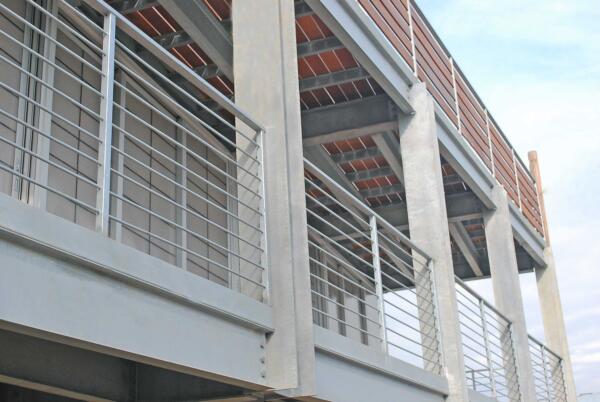LCC Case Studies
Calculating life-cycle cost can be cumbersome, so in order to facilitate the calculation, the American Galvanizers Association (AGA) developed an online calculator at lccc.galvanizeit.org. The calculator uses the equation found in ASTM A1068 Practice for Life-Cycle Cost Analysis of Corrosion Protection Systems on Iron and Steel Products, and cost data from a national survey of paint manufacturers. The paint data is collected by KTA Tator, Inc. and was last published in the 2016 National Association of Corrosion Engineers (NACE) paper Expected Service Life and Cost Considerations for Maintenance and New Construction Protective Coating Work . The hot-dip galvanizing cost data is a national average derived from a 2016 AGA Industry Survey.
To demonstrate the economic advantages of utilizing hot-dip galvanized steel, the following case studies were run on the automated calculator (www.lccc.galvanizeit.org). To correlate economic impact with environmental impact, LCC analyses were run on balcony and parking structures similar to the environmental case studies. Some logical assumptions about the mix of the steel products, paint system and application used, etc. were made when the information was unavailable. Similar to the environmental impacts, the coating system also has huge implications in LCC.
Case Study 1: Balcony Structure
The following parameters were used in the LCC comparison for the balcony structures:

- 60-year service life
- C3 Medium Corrosion environment
- Light structural pieces: 1.05 tons (420 ft2)
- Surface Prep: SP 10 automated
- Primer: Inorganic Zinc, in shop spray application
- Intermediate: Epoxy, shop spray application
- Topcoat: Polyurethane, shop spray application
- 3% inflation, 2% interest
The initial and life-cycle costs for the paint and galvanizing are shown below:
| Coating System | Initial Cost | Life-Cycle Cost | AEACa | ||
|---|---|---|---|---|---|
| Per ft2 | Total | Per ft2 | Total | Per ft2 | |
| Hot-Dip Galvanizing | $1.10 | $ 462 | $ 1.10 | $ 462 | $0.05 |
| IOZ/Epoxy/Polyurethane | $4.69 | $1,972 | $28.62 | $12,020 | $0.83 |
| aAverage Equivalent Cost per ft2 | |||||
Even for the relatively small amount of steel utilized in the balcony, the hot-dip galvanized balcony reduces the total cost over the life of the structure by 96%. The costs represented here may not seem like much, but the difference between the costs of the coatings is clear. Consider if you were developing a multi-family residential building, and were planning to install 100 identical balconies. Which coating would you choose?
Case Study 2: Parking Garage
The parking garage LCC comparison was based on the following parameters:

- 60-year service life
- C3 Medium corrosion environment
- Typical mix size/shapes: 3,000 tons steel (750,000 ft2)
- Surface Prep: SP-10 automated
- Primer: Inorganic Zinc, shop spray application
- Intermediate: Epoxy, shop spray application
- Topcoat: Polyurethane, shop spray application
- 3% inflation, 2% interest
The initial and life-cycle costs for the paint and galvanizing are shown below:
| Coating System | Initial Cost | Life-Cycle Cost | AEACa | |||
|---|---|---|---|---|---|---|
| Per ft2 | Total | Per ft2 | Total | Per ft2 | ||
| Hot-Dip Galvanizing | $1.76 | $1,320,000 | $ 1.76 | $ 1,320,000 | $0.05 | |
| IOZ/Epoxy/Polyurethane | $3.82 | $2,881,250 | $23.26 | $17,445,000 | $0.68 | |
| aAverage Equivalent Annual Cost per ft2 | ||||||
Although the same paint system applied to the parking garage costs slightly less than for the balcony, it is still initially more expensive than the hot-dip galvanized structure. Initially, the hot-dip galvanized parking structure provides a 54% savings over paint. However, when the life-cycle costs are considered, hot-dip galvanizing provides a 92% savings over the painted garage.